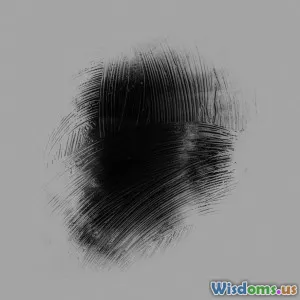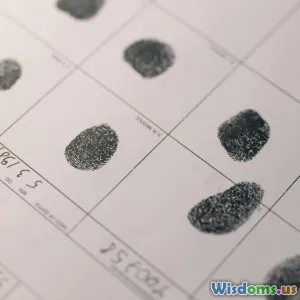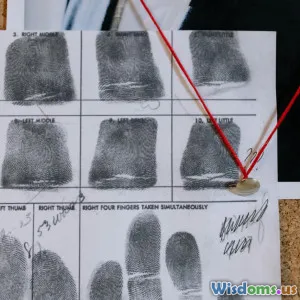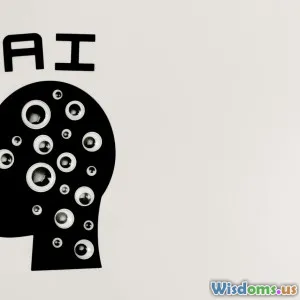
Ethics in Forensic Technology
7 min read Explore the ethical challenges in forensic technology shaping modern criminology and crime investigation. (0 Reviews)
Ethics in Forensic Technology: Navigating the Complexities of Crime Investigation
Forensic technology has emerged as a cornerstone of modern criminology and crime investigation, dramatically transforming how crimes are solved. From DNA profiling to digital forensics, advances enable quicker, more accurate case resolutions. However, beneath these groundbreaking achievements lies a complex ethical landscape that professionals must carefully navigate. How do we ensure that justice is served without compromising privacy, fairness, or reliability? This article explores the ethical concerns intertwined with forensic technology and offers real-world examples that illuminate the stakes involved.
The Promise and Power of Forensic Technology
At the heart of forensic technology’s rapid ascent is its unparalleled ability to process and analyze voluminous data and physical evidence with precision unimaginable a few decades ago. Techniques such as DNA analysis, fingerprint scanning, ballistics, facial recognition, and digital device forensics underpin thousands of successful investigations annually.
Example: DNA evidence proved pivotal in overturning wrongful convictions in the United States Prison System, with projects like The Innocence Project highlighting how forensic technology corrected miscarriages of justice dating back decades.
But this power comes with responsibility. Apart from technical accuracy, forensic technology demands rigorous ethical oversight to prevent misuse or mistakes that can have life-altering consequences.
Ethical Challenges in Forensic Technology
1. Accuracy and Reliability of Evidence
Forensic evidence plays a decisive role in courts, yet errors, misinterpretations, or over-reliance on technology can lead to wrongful convictions or acquittals. One notable case is the flawed use of bite mark analysis, once considered highly reliable but now recognized as prone to subjective judgment.
Data Insight: According to a report by the National Academy of Sciences (2009), multiple forensic disciplines lack sufficient scientific validation, raising ethical questions about evidential weight in trials.
The ethical question is clear: How do experts balance confidence in their tools with transparency about the limitations and potential errors?
2. Bias and Fairness
Every technological system is only as unbiased as the data it is trained on and the humans designing it. Algorithms in forensic facial recognition or predictive policing can perpetuate existing racial or socioeconomic biases.
Real-World Insight: Studies have shown facial recognition software exhibits higher error rates for people of color, leading to unfair targeting or misidentification.
Mitigating such bias requires continuous review, diverse data sets, and ethical guidelines ensuring fairness and nondiscrimination.
3. Privacy Concerns
Forensic technology often requires accessing personal data—phone records, internet usage, or genetic profiles—that intersect with individual privacy rights.
Example: The collection and use of genealogical DNA in criminal investigations have sparked debates about consent and the scope of data sharing, as seen in the arrest of the Golden State Killer using distant relatives’ genetic databases.
Ethical principles demand clear boundaries on data collection, informed consent where applicable, and respect for individual privacy.
4. Transparency and Accountability
Forensic experts must communicate methods and findings transparently to courts and the public. Complex algorithms or proprietary software can create 'black box' scenarios, hindering scrutiny.
Quote: Dr. Adrianne Jeffries, an ethics specialist, warns, "Without transparency, forensic technology risks becoming an unchallengeable authority, undermining legal fairness."
Accountability mechanisms—such as independent audits, open-source tools, and cross-disciplinary peer review—are critical ethical safeguards.
5. Training and Competency
Technological tools require specialized knowledge. Misapplication due to inadequate training can distort outcomes.
Example: The FBI’s misinterpretation of microscopic hair comparison evidence contributed to wrongful convictions, underscoring how expertise directly impacts ethical forensic practice.
Continual education and certification programs ensure forensic practitioners meet evolving standards.
Navigating Ethics: Best Practices and Future Directions
The forensic community is actively developing frameworks to address ethical concerns:
- Standardization: Establishing universally accepted protocols for forensic methods to reduce variability.
- Interdisciplinary Collaboration: Bringing ethicists, technologists, and legal experts together to design fair systems.
- Public Engagement: Educating the public about strengths and limitations fosters trust and informed discourse.
- Regulatory Oversight: Independent forensic commissions that monitor evidence reliability and ethical compliance.
Moreover, emerging technologies like blockchain are being explored to enhance evidence integrity and audit trails.
Conclusion
Forensic technology wields extraordinary power in illuminating truth and advancing justice. Yet, its ethical deployment is not guaranteed—continuous vigilance is essential to ensure technology aids rather than obstructs justice. Addressing accuracy, bias, privacy, transparency, and competence are foundational pillars of ethically sound forensic practice.
As forensic tools grow more sophisticated, so does the imperative to ground them in strong ethical principles. Law enforcement, legal professionals, scientists, and society at large must collaborate to harness forensic technology responsibly. Only then can we trust that the pursuit of justice embraces not just efficiency, but fairness, respect, and humanity.
References:
- National Research Council, Strengthening Forensic Science in the United States: A Path Forward, 2009.
- Innocence Project, Case Database, ongoing.
- Buolamwini, Joy, and Timnit Gebru. “Gender Shades: Intersectional Accuracy Disparities in Commercial Gender Classification” (2018).
- Jeffries, Adrianne. "Ethics and Artificial Intelligence in Forensic Contexts."
- FBI Hair Analysis Case Review.
Rate the Post
User Reviews
Popular Posts

















